We all work in a rapidly evolving business landscape where the adoption of Agile methodologies like Scrum has become increasingly prevalent. While Agile brings numerous benefits to project management, such as improved flexibility and faster delivery of value, it also introduces unique considerations in areas like financial tracking, risk assessment, and resourcing. For business executives navigating this terrain, understanding how to optimize financial management, risk assessment, and resourcing within an Agile framework is essential for project success.
It is worth mentioning that an Agile way of working has been adopted for more than software development. While Agile methodologies like Scrum have been traditionally associated with software development, their principles and practices have proven to be beneficial across various industries and types of projects.
Here are some examples of where Agile can transcend beyond software development and is successfully applied across various domains:
Marketing Campaigns: Agile aids marketing teams in adapting to rapidly changing requirements and market trends by breaking down tasks, prioritizing based on feedback, and fostering collaboration.
Product Development: Agile principles streamline product development processes, enhancing collaboration and accelerating time-to-market across industries like consumer goods, manufacturing, and automotive.
Business Process Improvement: Agile methodologies drive iterative and incremental process improvement, optimizing workflows, and fostering continuous improvement across organizations in initiatives like lean manufacturing and Six Sigma.
Product Management: Agile principles in product management emphasize customer collaboration, feedback-driven development, and iterative releases to ensure products meet user needs and deliver maximum value.
Human Resources: Agile methodologies streamline HR processes such as recruitment, performance management, and employee engagement, fostering a culture of continuous learning and improvement within organizations.
Comparing Project Management in Waterfall vs. Agile Methodologies
Different project management methodologies may play a crucial role in determining the success of initiatives. Two prominent methodologies, Waterfall and Agile, offer distinct approaches to managing projects. Let us go into how these methodologies differ in terms of financial management, risk assessment, and resource allocation throughout the project duration.
Waterfall Methodology

In a Waterfall approach, project management follows a linear sequence, where each phase must be completed before moving to the next. Financial planning, risk assessment, and resource allocation are typically determined upfront and remain relatively static throughout the project lifecycle.
Financial Management: Under the Waterfall model, financial planning is based on fixed-budget approaches. Budgets are allocated at the beginning of the project and remain unchanged, regardless of evolving priorities or requirements. Financial forecasting is limited, with little room for adaptation as the project progresses.
Risk Assessment: Risk assessment in Waterfall projects is often conducted at the beginning of the project and focuses on identifying potential risks upfront. However, risk management practices tend to be less dynamic, with limited opportunities for continuous risk identification and mitigation throughout the project lifecycle.
Resource Allocation: Resource allocation in Waterfall projects is predetermined and remains relatively static. Teams are assigned specific roles and responsibilities at the project’s outset, with little flexibility to adjust resource allocation based on changing priorities or project needs.
Agile Methodology
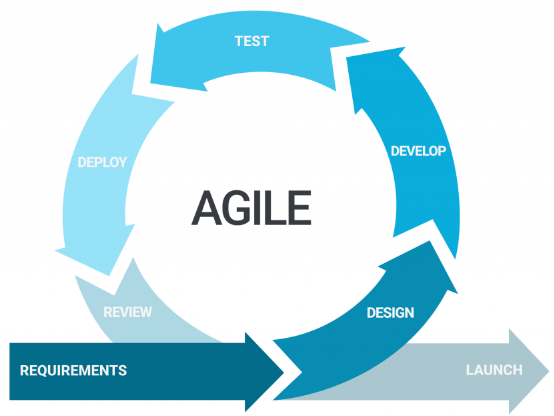
In contrast, Agile methodologies like Scrum offer a more iterative and adaptive approach to project management. Let’s explore how Agile methodologies address financial management, risk assessment, and resource allocation throughout the project lifecycle.
Financial Management: Agile methodologies advocate for iterative budgeting, where budgets are allocated for shorter timeframes known as Sprints. Financial forecasts are continuously adjusted based on evolving priorities and requirements, allowing for more adaptive financial management.
Risk Assessment: Agile promotes continuous risk identification and mitigation throughout the project lifecycle. Risks are regularly assessed and addressed in collaboration with the project team and stakeholders, ensuring that risk management practices remain dynamic and responsive to changing project conditions.
Resource Allocation: In Agile environments, resource allocation is flexible and adaptive. Cross-functional teams collaborate to deliver value incrementally, with the ability to adjust resource allocation dynamically based on changing priorities and Sprint objectives. Capacity planning and skill development are prioritized to ensure teams have the right mix of skills and expertise to deliver Sprint goals effectively.
Transitioning to Agile: Key Considerations
Project Startup:

Iterative Planning: Unlike traditional approaches, Agile embraces iterative and incremental planning, focusing on delivering value early and adapting plans based on feedback. Transitioning to Agile planning, our marketing team abandoned traditional fixed plans for iterative planning. We aimed to deliver value early by adapting plans based on continuous feedback. For example, we started with a broad marketing strategy but iteratively refined it based on customer insights gathered from initial campaigns.
Example: A software development team embarks on a new project to build an e-commerce platform. They adopt an iterative planning approach, starting with a broad vision of the platform’s functionality. In the initial Sprint, they prioritize the development of core features such as user registration, product catalog, and shopping cart functionality. As they progress through subsequent Sprints, they continuously refine their plans based on feedback from stakeholders and end-users. For instance, after launching the MVP (Minimum Viable Product) in the first Sprint, they gather feedback on user experience and performance. In response to this feedback, they adjust their plans for future Sprints, adding new features like payment integration and user reviews while refining existing features to enhance usability and performance.
Product Backlog Creation: The product backlog replaces traditional project plans, serving as a prioritized list of user stories collaboratively refined by the Product Owner, stakeholders, and the development team. Replacing traditional project plans, we developed a product backlog comprising marketing initiatives collaboratively refined by the Product Owner, stakeholders, and the team. For instance, our backlog included user stories for social media campaigns, influencer partnerships, and email marketing tailored to our target audience.
Example: The software development team creates a product backlog to guide the development process. Working closely with the Product Owner, stakeholders, and the development team, they compile a list of user stories representing features and functionalities essential for the e-commerce platform. During backlog refinement sessions held before each Sprint, the team collaboratively prioritizes user stories based on factors such as customer value, technical complexity, and business goals. For instance, they prioritize implementing secure payment processing functionality and mobile responsiveness based on market research indicating these features are critical for user satisfaction and business success. As they progress through Sprints and deliver functionality incrementally, they continuously update and refine the product backlog based on feedback from stakeholders and insights gained during Sprint Reviews. This iterative approach ensures that the product backlog remains aligned with evolving business needs and customer expectations throughout the project lifecycle.
Agile Chartering: Agile chartering aligns the team, defines project goals, and establishes collaboration norms, laying the groundwork for shared understanding and effective teamwork. To align the team and define project goals, we engaged in Agile chartering. This established collaboration norms and ensured shared understanding. We conducted team workshops to define project vision, goals, and roles, fostering effective teamwork from the outset.
Example: Agile chartering plays a crucial role in aligning the software development team and stakeholders, defining project goals, and establishing collaboration norms. At the outset of the project, the team conducts a chartering session where they define the project’s vision, objectives, and success criteria. They collaboratively create a project charter that outlines key deliverables, timelines, and roles and responsibilities. For instance, they establish the Product Owner’s authority to prioritize the product backlog and make decisions on behalf of stakeholders. Additionally, they define communication protocols and meeting cadences to ensure effective collaboration and transparency. Throughout the project, the team refers back to the project charter to stay aligned with project goals and adjust their approach as needed based on changing requirements and priorities.
Sprint Planning: Time-boxed iterations known as Sprints, typically lasting 1-4 weeks, are planned collaboratively in Sprint planning meetings, ensuring realistic scope definition and alignment with priorities. Our team embraced time-boxed iterations called Sprints, lasting 2 weeks each. In Sprint planning meetings, we collaboratively defined realistic scope and aligned priorities. For instance, each Sprint focused on specific marketing initiatives aligned with our quarterly goals.
Example: The software development team conducts Sprint planning meetings at the beginning of each Sprint to plan the upcoming iteration’s work. During these meetings, they review the prioritized user stories from the product backlog and select a set of stories to work on based on their capacity and Sprint goals. For example, in the first Sprint planning meeting, they select user stories related to setting up basic infrastructure and implementing core features. They break down selected user stories into smaller tasks, estimate the effort required for each task, and commit to completing them by the end of the Sprint. The team collaboratively defines acceptance criteria for each user story to ensure clarity and alignment on expected outcomes. By the end of the Sprint planning meeting, the team has a clear plan for the upcoming iteration, with defined goals, tasks, and timelines, ensuring realistic scope definition and alignment with priorities.

Stakeholder Management:
Product Owner Role: The Product Owner acts as the primary interface between the development team and stakeholders, representing stakeholder interests and managing the product backlog.
Example: In our latest marketing campaign project for a line of innovative office productivity tools, the designated Product Owner serves as the key intermediary between the marketing team and stakeholders. The Product Owner ensures that stakeholder interests are effectively represented and manages the product backlog meticulously. For instance, the Product Owner collaborates with product development teams to grasp the unique features of the productivity tools and translates them into compelling marketing messages tailored to resonate with the target audience. Additionally, they liaise with distribution partners to gather insights on customer preferences and adjust campaign strategies accordingly.
Incremental Stakeholder Feedback: Agile encourages frequent stakeholder feedback through Sprint Reviews, fostering continuous improvement and ensuring alignment with stakeholder needs.
Example: Agile methodologies advocate for frequent stakeholder feedback through Sprint Reviews, pivotal in refining our marketing campaign strategy. During these bi-weekly reviews, stakeholders including customers, industry experts, and sales representatives provide invaluable insights and recommendations for refining marketing materials and messaging. For example, after the initial Sprint Review, industry experts may suggest incorporating more technical specifications in our messaging. This feedback prompts the marketing team to adjust future campaign communications to emphasize product features more prominently, ensuring continual improvement and alignment with stakeholder expectations.
Collaborative Stakeholder Engagement: Stakeholder engagement in Agile is collaborative and ongoing, with opportunities for involvement in backlog refinement sessions, Sprint Reviews, and Daily Scrums, enhancing transparency and satisfaction.
Example: Stakeholder engagement in our Agile marketing campaign is characterized by collaborative and ongoing participation across various project activities. Stakeholders actively contribute to backlog refinement sessions, offering input on campaign priorities and messaging. Moreover, they partake in Sprint Reviews and Daily Scrums, providing feedback and updates to enhance transparency and satisfaction. For instance, during backlog refinement sessions, retail partners may propose promotional strategies to boost product visibility, while Daily Scrums allow stakeholders to address emerging issues, fostering effective collaboration and alignment.
Adaptive Stakeholder Management: Agile embraces change, requiring stakeholders and the development team to adapt to evolving priorities and incorporate feedback into the product backlog regularly.
Example: Agile methodologies underscore adaptability, necessitating stakeholders and the marketing team to swiftly respond to evolving priorities and market dynamics. In our marketing campaign for office productivity tools, stakeholders recognize the significance of adapting to changing consumer preferences and industry trends. For example, upon uncovering a growing demand for remote work solutions, stakeholders collaborate with the marketing team to pivot the campaign strategy accordingly, highlighting the tools’ suitability for remote work environments. This adaptive approach ensures that our marketing endeavors remain responsive to stakeholder feedback and market trends, ultimately driving greater success and customer satisfaction.
Managing Finance, Risk, and resources in an agile environment
Transitioning from traditional project management methodologies like Waterfall to Agile approaches introduces a paradigm shift in how projects are managed, particularly in terms of finance, risk assessment, and resource allocation. While the Waterfall method follows a linear sequence with fixed plans and predetermined allocations, it often struggles to accommodate unforeseen changes such as scope creep or evolving market conditions. For instance, when confronted with scope changes mid-project, the rigid structure of Waterfall can lead to delays, budget overruns, or compromised quality. In contrast, Agile methodologies offer a more adaptive and iterative approach, allowing for continuous adjustments in financial planning, risk management, and resource allocation throughout the project lifecycle. By embracing Agile principles, businesses can effectively navigate uncertainties, respond to changing priorities, and optimize project outcomes in dynamic environments. Let’s delve deeper into how Agile methodologies enhance financial management, risk assessment, and resource allocation to drive project success.
Optimizing Financial Management in Agile Environments
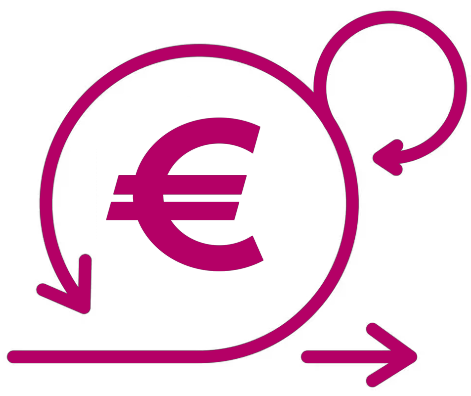
In Agile environments, financial tracking requires a shift from traditional, fixed-budget approaches to more adaptive and iterative methods. Here are some key strategies for optimizing financial management in Agile projects:
Iterative Budgeting: Allocate budgets for shorter timeframes (Sprints) and adjust based on evolving priorities and requirements.
Example: A marketing team tasked with launching a new product campaign adopts iterative budgeting for their Agile project. They allocate a budget for each Sprint, covering expenses such as advertising, content creation, and campaign management. At the start of each Sprint, they review the previous Sprint’s performance and adjust the budget allocation for the upcoming Sprint based on insights gained and changes in marketing priorities. For instance, if they identify opportunities to reallocate funds from underperforming channels to those showing promising results, they can adjust the budget accordingly to maximize ROI and campaign effectiveness.
Agile Forecasting: Utilize techniques like rolling-wave planning and burn-up/burn-down charts for adaptive financial forecasting and progress tracking.
Example: The marketing team utilizes Agile forecasting techniques to track their progress and make data-driven decisions throughout the campaign. They use rolling-wave planning to develop short-term forecasts based on current data and adjust their plans as they gain more insights into market trends and consumer behavior. Additionally, they employ burn-up and burn-down charts to visualize their progress toward campaign goals and make informed adjustments to resource allocation and marketing strategies as needed to stay on track and achieve desired outcomes.
Cost Visibility at User Story Level: Assign costs to individual user stories to track financial progress and inform value-driven decision-making.
Example: To ensure transparency and accountability in financial management, the marketing team assigns costs to individual user stories representing specific marketing activities or initiatives. For example, they assign costs to user stories related to social media advertising, email marketing campaigns, and influencer partnerships. By tracking costs at the user story level, they can assess the financial impact of each marketing initiative and prioritize efforts that deliver the highest value and ROI. This granular approach to cost visibility enables the team to make data-driven decisions and optimize resource allocation to maximize the return on their marketing investments.
Agile Financial Reporting: Adapt financial reports to reflect the iterative nature of Agile delivery, focusing on metrics like earned value and ROI.
Example: The marketing team adapts its financial reports to align with the iterative nature of Agile delivery and provide stakeholders with relevant insights into campaign performance. Instead of traditional, static financial reports, they develop dynamic dashboards that track key metrics such as earned value, ROI, and cost per acquisition in real time. These reports allow stakeholders to monitor progress, identify trends, and make timely adjustments to marketing strategies to optimize campaign performance and achieve business objectives. By focusing on actionable financial metrics, the team ensures that financial reporting remains aligned with Agile principles and facilitates data-driven decision-making for continuous improvement.
Agile Contract Models: Consider Agile-friendly contract models like time and materials (T&M) to align with Agile principles and project dynamics.
Example: In addition to optimizing financial management within their Agile project, the marketing team considers Agile-friendly contract models to streamline collaboration with external vendors and partners. They opt for a time and materials (T&M) contract model for engaging with creative agencies and digital marketing consultants. This flexible contract structure allows for incremental delivery of services and adjustments to scope and requirements based on evolving marketing needs and feedback. By aligning contract terms with Agile principles, the team fosters greater agility, transparency, and collaboration in their vendor relationships, enabling them to adapt quickly to changing market conditions and maximize the effectiveness of their marketing initiatives.
Optimizing Risk Assessment in Agile Practices
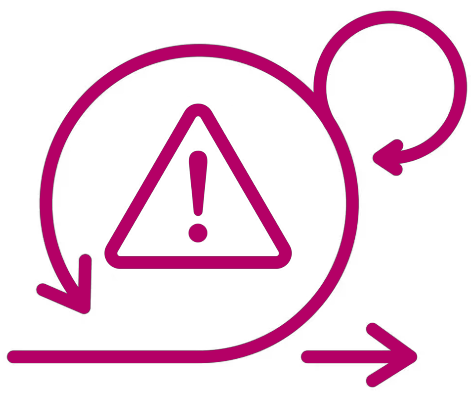
In Agile environments, risk assessment is an ongoing, collaborative activity integrated into the project lifecycle. Here’s how Agile professionals can effectively manage risks in Agile projects:
Continuous Risk Identification: Identify and address risks continuously throughout the project, leveraging opportunities in Sprint Planning, Daily Scrums, Sprint Reviews, and Retrospectives allowing teams to anticipate and mitigate potential issues before they escalate.
Example: The software development company continuously identifies and addresses risks throughout the project by leveraging opportunities in Sprint Planning, Daily Standups, Sprint Reviews, and Retrospectives. They encourage team members to raise any potential risks or issues during these meetings and actively seek input from stakeholders to ensure that all relevant risks are identified and addressed promptly. By adopting a proactive approach to risk identification, the team minimizes the likelihood of costly delays or disruptions and maintains project momentum toward achieving project goals.
Risk Backlog Management: Manage risks using a risk backlog, prioritizing and addressing them iteratively alongside product backlog items. Managing risks using a risk backlog allows Agile teams to prioritize and address potential threats systematically.
Example: The software development company manages risks using a risk backlog, prioritizing and addressing them iteratively alongside product backlog items. They maintain a dedicated risk backlog where all identified risks are documented, categorized, and prioritized based on their potential impact on project objectives. During Sprint Planning sessions, the team allocates time and resources to address high-priority risks, ensuring that risk mitigation activities are integrated into the project workflow. By managing risks alongside product backlog items, the team maintains a clear focus on delivering value while proactively addressing potential threats to project success.
Risk-Driven Backlog Prioritization: Prioritize backlog items based on value and risk considerations, addressing higher-risk items early to mitigate project risks.
Example: The software development company prioritizes backlog items based on value and risk considerations, addressing higher-risk items early to mitigate project risks. They analyze each backlog item to assess its potential impact on project objectives and prioritize items with higher perceived risks accordingly. For example, they prioritize user stories related to critical system functionalities or technical dependencies to address potential risks associated with these areas upfront. By adopting a risk-driven approach to backlog prioritization, the team ensures that risk mitigation activities are integrated into the project workflow from the outset, reducing the likelihood of costly delays.
Example: In response to identified risks, the marketing team adopts a risk-driven approach to backlog prioritization. They prioritize user stories and backlog items based not only on their business value but also on the associated risks. High-risk items are given precedence, ensuring that mitigation efforts are addressed early in the project lifecycle. For instance, if a user story involves experimenting with a new marketing channel that carries a high risk of low ROI, the team prioritizes it for early validation and adjustment to minimize potential losses.
Agile Risk Response Strategies: Employ Agile risk response strategies like short experiments and feedback loops to minimize the impact of risks on project outcomes.
Example: Agile risk response strategies play a crucial role in minimizing the impact of risks on project outcomes. For instance, an Agile product team facing a potential delay due to a key team member’s unexpected absence implements a risk response strategy by cross-training team members to ensure redundancy in critical skills. By proactively addressing risks with Agile risk response strategies, the team maintains project momentum and minimizes disruptions to delivery timelines.
To effectively respond to identified risks, the marketing team employs Agile risk response strategies tailored to the project’s needs. Instead of relying solely on traditional risk mitigation plans, they embrace Agile principles of experimentation and feedback loops. For instance, if a risk arises related to the performance of a specific advertising platform, the team may conduct small-scale experiments with different ad formats or audience targeting strategies. They gather feedback quickly, iterate on their approach, and adapt their tactics based on real-time performance data to mitigate the risk effectively.
Continuous Improvement: Embrace a culture of continuous improvement, regularly reflecting on risk management practices and refining them based on feedback and lessons learned.
Example: Embracing a culture of continuous improvement is fundamental to refining risk management practices in Agile environments. For example, a project retrospective held at the end of each Sprint provides an opportunity for the Agile team to reflect on the effectiveness of risk management strategies employed during the Sprint. By soliciting feedback and identifying areas for improvement, the team iteratively enhances its risk management practices, fostering a culture of continuous learning and adaptation.
Throughout the campaign, the marketing team maintains a culture of continuous improvement in managing risks. They conduct regular retrospectives to reflect on risk management practices, identify areas for enhancement, and implement corrective actions. By fostering an environment where team members feel empowered to voice concerns and suggest improvements, the team iteratively refines its risk management processes. This commitment to continuous improvement ensures that the team becomes more adept at anticipating, mitigating, and responding to risks as they arise, ultimately enhancing the project’s overall success.
Optimizing Resourcing in Agile Environments
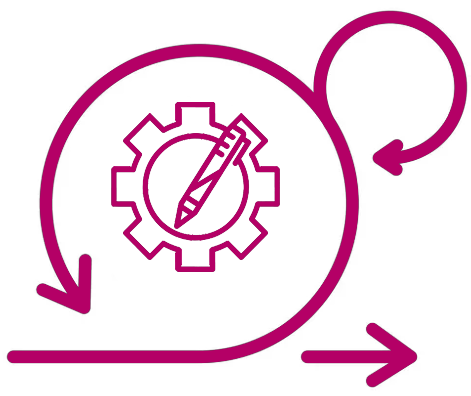
In traditional project management, resource allocation is often determined upfront and remains relatively static throughout the project lifecycle. However, in Agile environments like Scrum, resourcing takes on a more dynamic and adaptive approach to accommodate the iterative and collaborative nature of the framework.
Cross-Functional Teams: Agile teams are typically cross-functional, comprising individuals with diverse skills necessary to deliver value incrementally. These teams are self-organizing, meaning they have the autonomy to determine how best to allocate resources to achieve Sprint goals. Cross-functional teams promote collaboration, reduce dependencies, and enhance adaptability, enabling faster delivery of high-quality products.
Example: In implementing an Agile approach, a software development company forms cross-functional teams comprising developers, designers, testers, and product managers. Each team member brings unique expertise and skills to the table, enabling the team to tackle all aspects of software development within the Sprint. For instance, during Sprint planning, the team collaborates to break down user stories into tasks, with developers writing code, designers creating user interfaces, testers conducting quality assurance, and product managers ensuring alignment with customer requirements. Throughout the Sprint, the cross-functional team works closely together, leveraging their diverse skill sets to deliver high-quality increments of the product. Daily stand-up meetings facilitate communication and collaboration, allowing team members to discuss progress, address any impediments, and coordinate efforts effectively. By promoting cross-functional collaboration, the team reduces dependencies and handoffs, leading to faster delivery and improved adaptability to changing requirements.
Flexible Resource Allocation: Unlike traditional project management, where resources are allocated based on a predefined plan, Agile teams have the flexibility to adjust resource allocation dynamically based on changing priorities and Sprint objectives. Team members may be reassigned to different tasks or user stories within the Sprint to optimize productivity and respond to emerging challenges or opportunities.
Example: In an Agile software development project, the development team has the flexibility to reallocate resources based on evolving priorities and Sprint objectives. For instance, if a critical feature requires additional development effort to meet a Sprint goal, the team can adjust resource allocation by reallocating developers from less critical tasks or seeking assistance from team members with relevant expertise. This dynamic resource allocation ensures that the team can optimize productivity and respond promptly to emerging challenges or opportunities. During Sprint execution, the development team monitors progress closely and adapts resource allocation as needed to address any bottlenecks or impediments. Daily stand-up meetings provide a forum for team members to discuss resource needs and collaborate on solutions to optimize workflow and maintain momentum. By embracing flexible resource allocation practices, the team can maintain agility and resilience in the face of changing project requirements and priorities.
Capacity Planning: Agile teams engage in capacity planning to ensure they have the right mix of skills and expertise to deliver Sprint goals effectively. Capacity planning involves estimating team capacity based on factors such as team velocity, individual availability, and skill sets. By understanding team capacity, Product Owners can prioritize backlog items accordingly and optimize resource allocation for maximum efficiency.
Example: An Agile marketing team engages in capacity planning to ensure they have the right mix of skills and expertise to deliver Sprint goals effectively. They assess the capacity of team members based on their availability, skill sets, and existing commitments. For instance, during Sprint planning, the team evaluates the workload associated with each user story and allocates tasks accordingly to balance workload distribution across team members and avoid over-commitment. Throughout the Sprint, the marketing team monitors capacity utilization and adjusts task assignments as needed to prevent burnout and maintain productivity. If team members encounter unexpected challenges or competing priorities, they collaborate to redistribute tasks or seek assistance from other team members to ensure the timely delivery of Sprint goals. By proactively managing capacity, the team can optimize productivity and deliver value consistently across Sprints.
Skill Development and Cross-Training: Agile environments emphasize continuous learning and improvement among team members to enhance expertise and adaptability. Cross-training facilitates a flexible workforce by equipping individuals with diverse skill sets, fostering collaboration, and mitigating dependencies within the team.
Example: In an Agile software development organization, the company prioritizes continuous learning and skill development among its team members to enhance capabilities and flexibility. For instance, developers are encouraged to participate in workshops, online courses, and peer-to-peer learning sessions to acquire new programming languages, frameworks, or technical skills. Similarly, testers may undergo cross-training to gain proficiency in test automation tools or performance testing techniques. By investing in skill development, the organization ensures that team members remain adaptable and capable of taking on diverse responsibilities within the Agile team.
As part of their professional development plan, team members set aside dedicated time for learning and skill enhancement. They regularly share their newfound knowledge and insights with colleagues during knowledge-sharing sessions or brown bag lunches, fostering a culture of continuous learning and collaboration within the organization. By cross-training team members, the organization mitigates the risk of skill silos and enhances its overall capacity to respond to changing project requirements and technology trends.
Resource Constraints and Dependencies: Resource constraints are managed dynamically through iterative planning and prioritization, ensuring optimal allocation of limited resources to meet evolving project needs. Dependencies are actively identified and addressed through collaborative teamwork, enabling adaptive strategies to mitigate risks and maintain project momentum amidst changing
Example: In an Agile software development project, the development team identifies and manages resource constraints and dependencies to mitigate risks and ensure smooth project execution. For instance, if a critical task is dependent on the availability of an external API or third-party service, the team proactively communicates with stakeholders to confirm timelines and dependencies. Additionally, the team identifies potential resource bottlenecks, such as limited server capacity or a shortage of testing environments, and takes proactive measures to address these constraints to prevent delays in project delivery.
Throughout the project lifecycle, the development team monitors resource constraints and dependencies closely, updating stakeholders regularly on any changes or challenges encountered. By maintaining open communication and transparency, the team fosters collaboration and trust among stakeholders, enabling them to work together to resolve issues and minimize project risks. By proactively managing resource constraints and dependencies, the team ensures that project delivery remains on track and aligned with stakeholder expectations.
Scaling Agile Teams: Scaling Agile teams involves expanding Agile practices across larger teams or organizations, requiring careful coordination and alignment to maintain agility while accommodating increased complexity. It entails establishing frameworks like SAFe or LeSS, fostering communication, and empowering teams to autonomously manage their work, enabling efficient collaboration and adaptation to larger-scale projects.
Example: As a technology company initiates a comprehensive software development project to overhaul its flagship product, the necessity to scale Agile teams arises to accommodate the project’s expanded scope and complexity. Leveraging frameworks like SAFe or LeSS, the organization establishes a structured approach to extending Agile practices across multiple departments, emphasizing careful coordination and alignment to maintain agility. For instance, as the project advances, demands for specialized expertise in areas like artificial intelligence (AI) and machine learning (ML) prompt the integration of additional data scientists and AI specialists into existing Agile teams. This collaboration ensures the seamless incorporation of advanced AI-driven functionalities. Moreover, fostering a culture of open communication and cross-functional teamwork is prioritized to facilitate efficient collaboration and adaptation to larger-scale projects. Comprehensive training and onboarding are provided to new team members to ensure alignment with Agile principles, while adjustments to team structures and workflows are made as needed to address the heightened scale and complexity. Through effective scaling of Agile teams, the organization optimizes resource utilization and harnesses diverse expertise to deliver incremental value, ultimately driving project success and achieving business objectives.
Continuous Improvement: Continuous improvement in resource management within Agile environments involves regularly evaluating resource utilization and allocation processes to identify inefficiencies and optimize resource usage. Agile teams implement iterative changes based on feedback and data analysis to ensure that resources are allocated effectively, leading to improved project performance and
Example: In an Agile software development company, continuous improvement in resource management is paramount for optimizing project efficiency and effectiveness. Following the completion of each Sprint, the project team conducts a retrospective meeting to assess resource utilization, identify bottlenecks, and propose enhancements. For instance, they may analyze how team members’ skills were utilized and identify opportunities to cross-train individuals to mitigate resource constraints and dependencies. Moreover, the organization encourages open communication and knowledge sharing, allowing team members to suggest innovative solutions for resource optimization, ultimately fostering a culture of continuous improvement that drives project success.
Wrapping up:
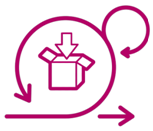
To wrap it all up, optimizing financial management, risk assessment, and resourcing in Agile environments requires a shift from traditional, static approaches to dynamic, adaptive practices. By embracing Agile principles and adapting traditional practices to suit the iterative, collaborative nature of Agile methodologies like Scrum, organizations can optimize resource utilization, mitigate risks, and deliver value more effectively in an ever-changing business landscape.
With these strategies and examples in mind, businesses can navigate the complexities of Agile environments more effectively, optimizing financial management, risk assessment, and resources to drive project success and deliver value in today’s dynamic business landscape.
Remember, Agile is not just a methodology; it’s a mindset. Embrace the principles, iterate, and continuously improve to deliver value in today’s dynamic business landscape.
